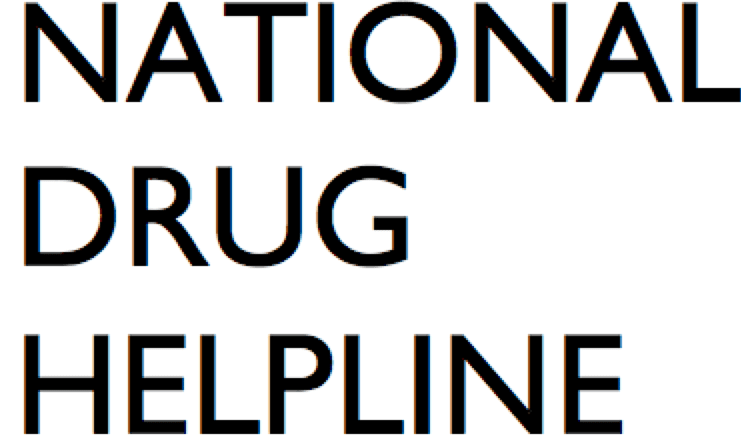Drug overdoses have likely already surpassed 100,000 annually in the United States, according to a new analysis from Drug Helpline. Researchers examined local, state, government, police, industry and media reports to form a stark view of a crisis accelerating at alarming speed.
In 2019, before the COVID-19 pandemic began, there were nearly 71,000 drug overdose deaths in the United States. [1] The latest data from the Centers for Disease Control and Prevention’s (CDC’s) National Center for Health Statistics notes an alarming rise in this already worrisome figure. Data released in October 2021 by the CDC has reported more than 96,000 drug overdose deaths in the US in the 12-month period ending March 2021.
This reflects a nearly 30% increase over the previous year. It is provisional data and warrants further investigation. The update covers the deadliest period of the pandemic in the US, when cases, hospitalizations, and deaths surged during late 2020 and early 2021. The real numbers could be worse. The CDC estimates that predicted deaths due to drug overdoses from March 2020 to March 2021 could be over 99,000, when you take into account delayed reporting. [2]
Given that the CDC’s predicted number for drug overdose deaths in March 2021 was 99,106, and with a steady increase since 2020, drug overdose deaths in the US may already have edged past 100,000 on a rolling annual basis. The overwhelming majority of data suggests the crisis continues to get worse rather than better.

Some states have fared better than others. In particular, South Dakota, New Jersey, and New Hampshire saw a decline in the number of overdose deaths between March 2020 and March 2021. The largest decline occurred in South Dakota, where overdose deaths fell by over 17%.
The news is not so good from Vermont. The state saw a staggering 85% increase in overdose deaths in the 12-month period ending March 2021.
When you break down the data set according to the type of drugs involved, opioids came out at the top of the chart, accounting for the highest number of overdose deaths. In past years, opioids—mainly synthetic opioids other than methadone—have been the key drivers of overdose deaths, accounting for over 70% of lives lost to drug overdoses.
Experts say the uncertainty and stress associated with the global health crisis during COVID-19 has led to an increase in drug consumption as a coping mechanism. Combined with reduced access to life-saving treatments for substance use disorders, this has led to a tragic rise in drug overdose deaths. According to Dr. Nora Volkow, the COVID-19 pandemic has “created a devastating collision of health crises in America.”
Data from the 2020 National Drug Threat Assessment by the Drug Enforcement Administration (DEA)
The 2020 National Drug Threat Assessment (NDTA) report from the DEA offers a strategic analysis of the drug situation in the US during 2019 and the first half of 2020. The COVID-19 pandemic placed restrictions on travel and led to US border closures and the closure of non-essential businesses. This posed challenges for criminal organizations involved in drug trading during the first half of 2020, which was reflected in fluctuating prices, availability, and distribution of drugs in the global markets. [3] Key findings from the report are as follows.
Illicit Opioids and Heroin
- Based on crime laboratory data from the National Forensic Laboratory Information System (NFLIS), heroin availability is on the decline. In 2019, there was a 13% decrease in heroin reports compared to 2018.
- Fentanyl availability increased by 12% in 2019 compared to 2018.
- The four states with the most fentanyl and heroin reports are New Jersey, New York, Ohio, and Pennsylvania.
- The increased presence of fentanyl and heroin in these markets results in higher rates of overdose deaths related to these drugs.
- In 2018, there were nearly 15,000 total heroin overdose deaths, including approximately 9,000 heroin overdoses with fentanyl and 6,000 overdose deaths involving heroin without fentanyl.
- As of January 2020, 49 states in the US identified the presence of fentanyl-laced counterfeit pills, and 38 states reported deaths attributed to these pills. This was considerably higher than 22 states reporting deaths related to such pills in April 2018.
Methamphetamine
- The COVID-19 pandemic has disproportionately affected methamphetamine markets compared to other drugs, based on reports from DEA Field Divisions, in terms of pricing in the wholesale and retail markets.
- In 2019, the DEA seized over 53,000 kilograms of methamphetamine nationwide. This was 55% more than in 2018.
- According to the CDC, there were over 12,000 overdose deaths attributed to psychostimulants in 2018, reflecting a 23% increase over 2017 and an 874% increase since 2008.
- The primary producers and suppliers of methamphetamine in the US are Mexican transnational criminal organizations (TCOs). Clandestine meth labs in the US cannot compete with the quantity or quality of the drug produced on an industrial scale in Mexico. In 2019, nearly 85% of all methamphetamine labs seized in the US were small-scale operations capable of producing less than 2 ounces of methamphetamine.
- Mexican TCOs have taken the COVID-19 pandemic as an opportunity to increase methamphetamine prices, citing an exaggerated short supply of ingredients. The DEA believes the assertions of limited availability are not credible, given that there was a 2-year inventory of the drug in Mexico before the pandemic began.
- Meth addiction is a serious issue for people across the US, causing long-term health issues and deaths.
Cocaine
- As of October 2020, the pandemic had not severely impacted the trafficking of cocaine in the US. The primary supply source of cocaine for US markets is Colombia.
- There was a 14% decrease in cocaine reports submitted to the NFLIS in 2019 compared to 2018. The 2019 figure was half the reported amount of the cocaine peak in 2006.
- Between 2010 and 2018, the number of overdose deaths involving cocaine has increased by 251%.
- In 2018, there were nearly 15,000 deaths from drug overdoses involving cocaine.
- The US states with the highest number of drug poisoning deaths involving cocaine are New York, Florida, Ohio, Pennsylvania, New Jersey, and Illinois.
- Cocaine addiction can affect about 2 million in the US.
Controlled Prescription Drugs
- Prescription opioids claimed nearly 15,000 lives in the US in 2018, averaging 41 deaths every day.
- Prescription opioids are involved in 32% of all opioid overdose deaths.
- Notably, there was a 13.5% decrease in drug overdose deaths involving prescription opioids from 2017 to 2018. Deaths involving prescription opioids have increased alarmingly from 1999, when 4,000 deaths were attributed to this class of drugs.
- In 2018, West Virginia reported the highest number of overdose deaths due to prescription opioids, at a rate of approximately 13 per 100,000 people.
- Data shows that 9.7 billion dosage units of opioid controlled prescription drugs (CPDs) were manufactured and dispensed in 2019. This is the first time since 2010 that annual opioid prescriptions have dropped below 10 billion.
- Hydrocodone and oxycodone products made up around 78% of all opioid CPDs in 2019.
- Arkansas and Alabama have the highest opioid prescription rates. Hawaii and New York have the lowest opioid prescription rates.
- The DEA increased the aggregate production quota by 15% in 2020 for morphine, fentanyl, and other opioid drugs to account for increased medical demands during the COVID-19 pandemic.
- The DEA also adjusted prescription guidelines for medical professionals during the pandemic. For example, practitioners were granted state reciprocity for neighboring states to dispense controlled substances. Telemedicine regulations were also extended, giving more flexibility in prescribing these medicines without direct contact. However, there is fear that these flexibilities could lead to increased abuse and misuse.
Marijuana
- Marijuana remains illegal under federal law. It is the most commonly abused illicit drug in the US.
- In 2019, there was a 21% decrease in the number of marijuana reports submitted to the NFLIS compared to 2018. Yet cannabis/THC was only second to methamphetamine in the number of NFLIS reports.
New Psychoactive Substances (NPSs)
- Synthetic cannabinoids and synthetic cathinones are the most common new psychoactive substances available and abused in the US. They have similar effects to controlled substances and are marketed as legal alternatives to controlled substances.
- In 2019, the Poison Control Center reported a 42% decrease in calls about synthetic cannabinoid exposure compared to 2018. This was an 85% decrease compared to the record-high number of calls in 2015.
- In 2019, there was a 28% decrease in NFLIS reports of synthetic cathinones.
- As previously popular NPSs are controlled, more are developed and rise in popularity.
- Two NPSs—flualprazolam and isotonitazene—have gained attention in 2019 and 2020 due to their implication in overdose deaths.

State-Wise Drug Overdose Deaths in the US between March 2020 and March 2021
According to the CDC, the overall percentage change for the entire United States from March 2020 to March 2021 is a 30.8% increase in drug overdose deaths. Vermont saw the highest increase, with drug overdose deaths rising by an alarming 85%. South Dakota fared the best and showed an approximately 17% decrease in drug overdose deaths. The predicted drug overdose deaths in each US state for the 12-month period ending March 2021 are as follows: [2]
Vermont
Predicted deaths March 2020: 114
Predicted deaths March 2021: 211
Percentage change: +85.1
West Virginia
Predicted deaths March 2020: 965
Predicted deaths March 2021: 1,564
Percentage change: +62.1
Kentucky
Predicted deaths March 2020: 1,447
Predicted deaths March 2021: 2,273
Percentage change: +57.1
Louisiana
Predicted deaths March 2020: 1,388
Predicted deaths March 2021: 2,168
Percentage change: +56.2
Tennessee
Predicted deaths March 2020: 2,305
Predicted deaths March 2021: 3,476
Percentage change: +50.8
California
Predicted deaths March 2020: 6,948
Predicted deaths March 2021: 10,408
Percentage change: +49.8
Mississippi
Predicted deaths March 2020: 420
Predicted deaths March 2021: 623
Percentage change: +48.3
Virginia
Predicted deaths March 2020: 1,599
Predicted deaths March 2021: 2,332
Percentage change: +45.8
South Carolina
Predicted deaths March 2020: 1,254
Predicted deaths March 2021: 1,827
Percentage change: +45.7
Nebraska
Predicted deaths March 2020: 149
Predicted deaths March 2021: 217
Percentage change: +45.6
North Carolina
Predicted deaths March 2020: 2,479
Predicted deaths March 2021: 3,556
Percentage change: +43.4
Minnesota
Predicted deaths March 2020: 827
Predicted deaths March 2021: 1,177
Percentage change: +42.3
Washington
Predicted deaths March 2020: 1,324
Predicted deaths March 2021: 1,857
Percentage change: +40.3
Oregon
Predicted deaths March 2020: 637
Predicted deaths March 2021: 893
Percentage change: +40.2
Alaska
Predicted deaths March 2020: 117
Predicted deaths March 2021: 164
Percentage change: +40.2
Nevada
Predicted deaths March 2020: 710
Predicted deaths March 2021: 992
Percentage change: +39.7
Georgia
Predicted deaths March 2020: 1,465
Predicted deaths March 2021: 2,042
Percentage change: +39.4
Colorado
Predicted deaths March 2020: 1,174
Predicted deaths March 2021: 1,633
Percentage change: +39.1
Arkansas
Predicted deaths March 2020: 385
Predicted deaths March 2021: 535
Percentage change: +39.0
Texas
Predicted deaths March 2020: 3,343
Predicted deaths March 2021: 4,593
Percentage change: +37.4
Kansas
Predicted deaths March 2020: 387
Predicted deaths March 2021: 531
Percentage change: +37.2
Indiana
Predicted deaths March 2020: 1,798
Predicted deaths March 2021: 2,438
Percentage change: +35.6
Alabama
Predicted deaths March 2020: 810
Predicted deaths March 2021: 1,094
Percentage change: +35.1
New Mexico
Predicted deaths March 2020: 655
Predicted deaths March 2021: 871
Percentage change: +33.0
Arizona
Predicted deaths March 2020: 2,110
Predicted deaths March 2021: 2,735
Percentage change: +29.6
Florida
Predicted deaths March 2020: 6,021
Predicted deaths March 2021: 7,805
Percentage change: +29.6
New York
Predicted deaths March 2020: 2,451
Predicted deaths March 2021: 3,130
Percentage change: +27.7
Ohio
Predicted deaths March 2020: 4,348
Predicted deaths March 2021: 5,491
Percentage change: +26.3
District of Columbia
Predicted deaths March 2020: 418
Predicted deaths March 2021: 518
Percentage change: +23.9
Maine
Predicted deaths March 2020: 420
Predicted deaths March 2021: 518
Percentage change: +23.3
Oklahoma
Predicted deaths March 2020: 650
Predicted deaths March 2021: 798
Percentage change: +22.8
Rhode Island
Predicted deaths March 2020: 335
Predicted deaths March 2021: 407
Percentage change: +21.5
Wisconsin
Predicted deaths March 2020: 1,293
Predicted deaths March 2021: 1,559
Percentage change: +20.6
Michigan
Predicted deaths March 2020: 2,435
Predicted deaths March 2021: 2,924
Percentage change: +20.1
Missouri
Predicted deaths March 2020: 1,655
Predicted deaths March 2021: 1,980
Percentage change: +19.6
Maryland
Predicted deaths March 2020: 2,385
Predicted deaths March 2021: 2,838
Percentage change: +19.0
Utah
Predicted deaths March 2020: 557
Predicted deaths March 2021: 656
Percentage change: +17.8
Illinois
Predicted deaths March 2020: 3,057
Predicted deaths March 2021: 3,577
Percentage change: +17.0
Pennsylvania
Predicted deaths March 2020: 4,680
Predicted deaths March 2021: 5,462
Percentage change: +16.7
Montana
Predicted deaths March 2020: 141
Predicted deaths March 2021: 164
Percentage change: +16.3
Wyoming
Predicted deaths March 2020: 81
Predicted deaths March 2021: 93
Percentage change: +14.8
Iowa
Predicted deaths March 2020: 374
Predicted deaths March 2021: 429
Percentage change: +14.7
Hawaii
Predicted deaths March 2020: 249
Predicted deaths March 2021: 282
Percentage change: +13.3
North Dakota
Predicted deaths March 2020: 107
Predicted deaths March 2021: 121
Percentage change: +13.1
Idaho
Predicted deaths March 2020: 250
Predicted deaths March 2021: 280
Percentage change: +12.0
Connecticut
Predicted deaths March 2020: 1,306
Predicted deaths March 2021: 1,422
Percentage change: +8.9
Massachusetts
Predicted deaths March 2020: 2,272
Predicted deaths March 2021: 2,411
Percentage change: +6.1
Delaware
Predicted deaths March 2020: 458
Predicted deaths March 2021: 458
Percentage change: 0.0
New Jersey
Predicted deaths March 2020: 2,922
Predicted deaths March 2021: 2,892
Percentage change: −1.0
New Hampshire
Predicted deaths March 2020: 391
Predicted deaths March 2021: 380
Percentage change: −2.8
South Dakota
Predicted deaths March 2020: 93
Predicted deaths March 2021: 77
Percentage change: −17.2
Effects of the COVID-19 Pandemic on the Opioid Crisis
Worldwide, some 500,000 people die due to drug use every year. Over 70% of these deaths are opioid related. In the United States, the number of people dying from an opioid overdose increased by 120% from 2010 to 2018. Synthetic opioids (fentanyl and its analogs) accounted for two-thirds of opioid-related deaths in 2018.
The COVID-19 pandemic has led to a further increase in opioid-related deaths in the US, mostly involving fentanyl and other synthetic opioids. [4] One study from Rhode Island has shown that: [5]
- The death rate from drug overdose increased in 2020 compared to 2019 (US national average 30.8%).
- Deaths involving synthetic opioids increased significantly in 2020 compared to 2019.
- The rate of drug overdose deaths increased significantly in men (77%) and non-Hispanic White people (80%).
- The rate of deaths due to drug overdoses increased significantly among single people.
- There was a significant increase in the proportion of overdose deaths in people who had experienced job loss.
- Deaths occurring in personal residences increased significantly during the pandemic, while the proportion of deaths pronounced in a hospital setting declined.
The data from Rhode Island shows several trends of people who died from drug overdose in 2020 versus 2019. The findings confirm that while rates of deaths due to overdose were increasing in 2019, they saw an even greater increase during the COVID-19 pandemic. The Rhode Island findings are consistent with findings in other parts of the US.
Researchers hypothesize that measures put in place to control the spread of COVID-19, for example, social distancing and stay-at-home orders, led to social isolation, decreased support, and increased drug use, with a consequent increase in the risk of overdose death. This is corroborated by the finding that a large number of deaths from drug overdose in 2020 occurred in a personal residence. There was a significant decrease in the proportion of deaths occurring in hospitals. This is believed to be due to a decrease in non-COVID-19 hospital admissions in 2020; people were also reluctant to go to the ER during the pandemic.
The findings also showed that a large percentage of deaths from drug overdoses involved people who had prior diagnoses of depression and anxiety. This is consistent with previous findings of a high prevalence of anxiety and depression among people who die of a drug overdose.
The key finding of the study is that four primary factors associated with the COVID-19 pandemic—increased isolation, mental stressors, economic insecurity,and a lethality of drug supply—have given rise to the emerging alarming trends in deaths from drug overdose.
Publication date: October 21, 2021
Last updated: May 27, 2025
References
| ↑1 | SHADAC. The Opioid Epidemic in the United States. Available online. Accessed on April 4, 2025. https://www.shadac.org/opioid-epidemic-united-states |
|---|---|
| ↑2 | CDC National Center for Health Statistics Provisional Drug Overdose Death Counts. Available online. Accessed on October 21, 2021. https://www.cdc.gov/nchs/nvss/vsrr/drug-overdose-data.htm |
| ↑3 | EA. 2020 National Drug Threat Assessment. Available online. Accessed on October 21, 2021. https://www.dea.gov/sites/default/files/2021-02/DIR-008-21%202020%20National%20Drug%20Threat%20Assessment_WEB.pdf |
| ↑4 | World Health Organization. Opioid Overdose. Available online. Accessed on October 21, 2021. https://www.who.int/news-room/fact-sheets/detail/opioid-overdose |
| ↑5 | Macmadu A, Batthala S, Correia Gabel AM, et al. Comparison of Characteristics of Deaths From Drug Overdose Before vs During the COVID-19 Pandemic in Rhode Island. JAMA Netw Open. 2021;4(9):e2125538. doi:10.1001/jamanetworkopen.2021.25538. Available online. Accessed on October 21, 2021. https://jamanetwork.com/journals/jamanetworkopen/fullarticle/2784267 |
